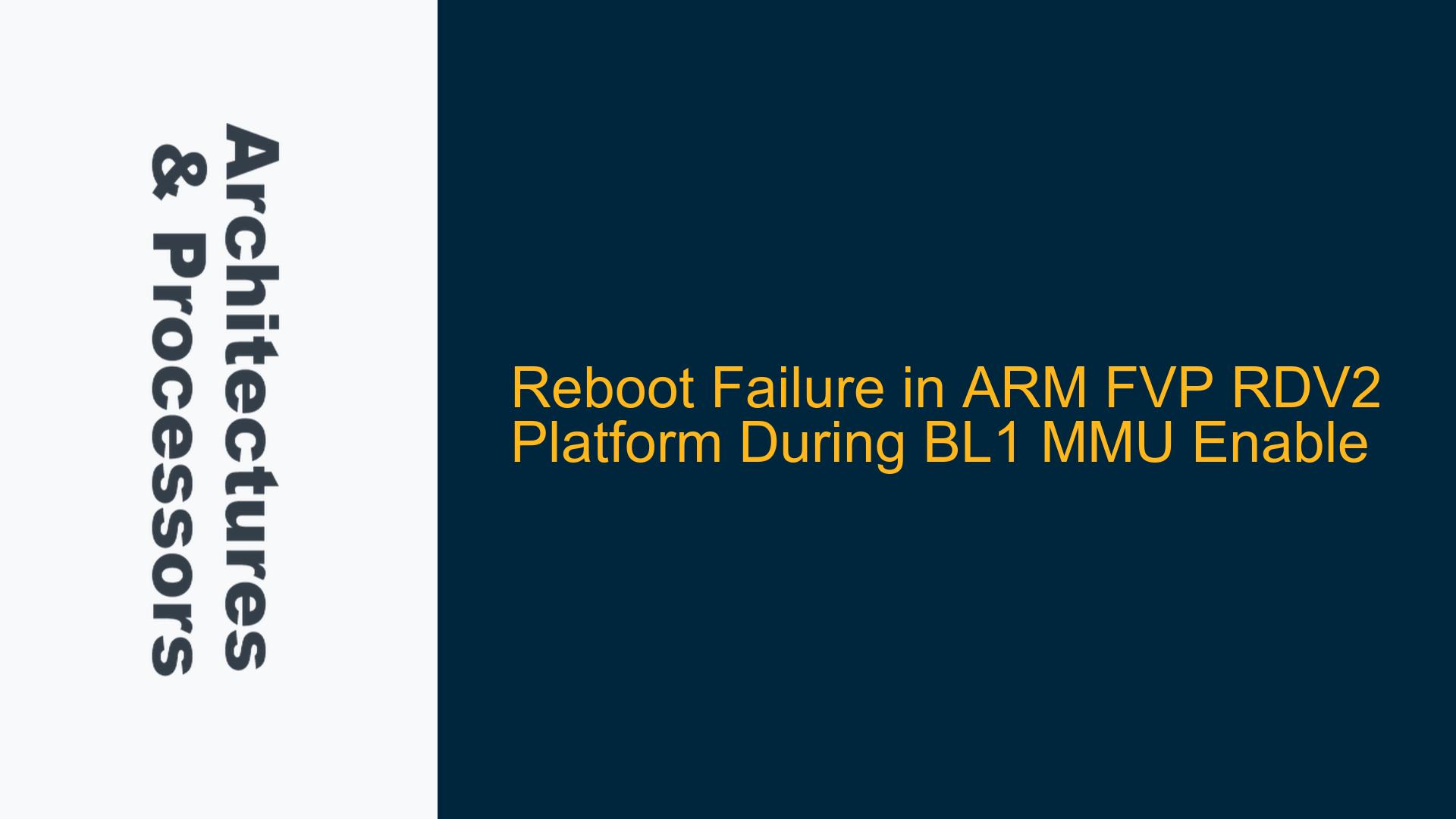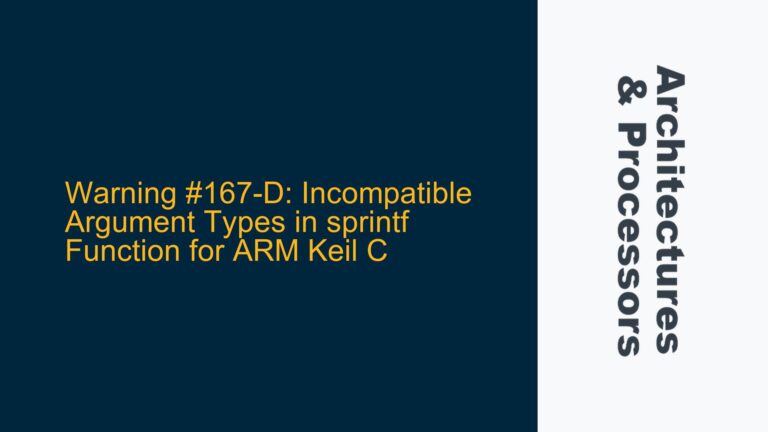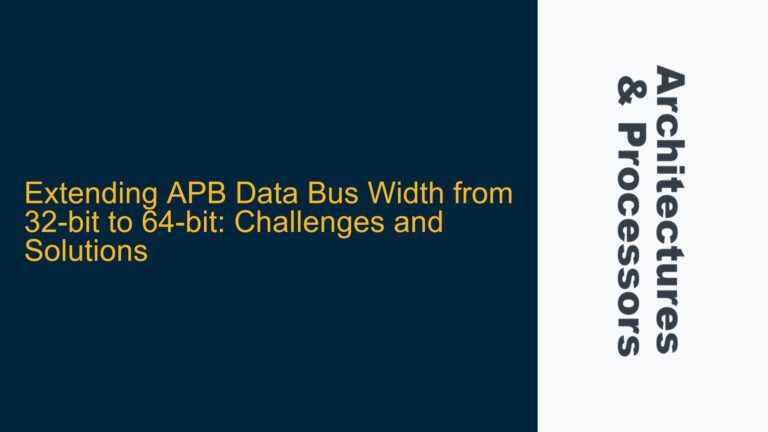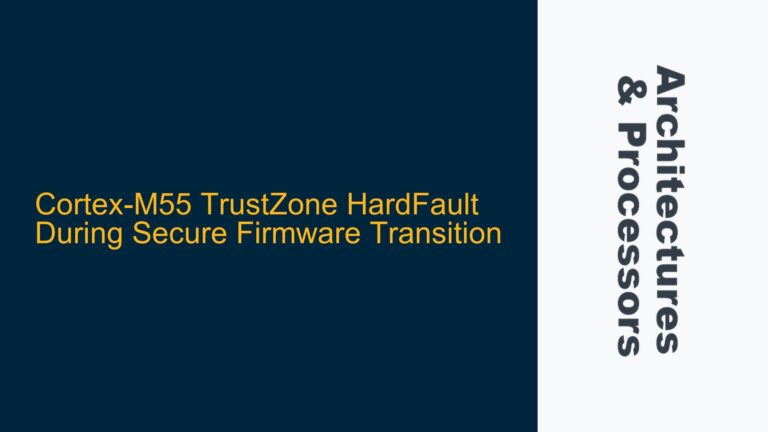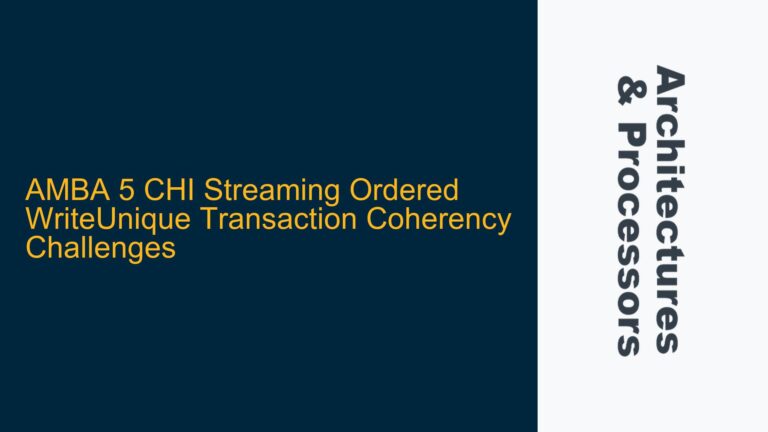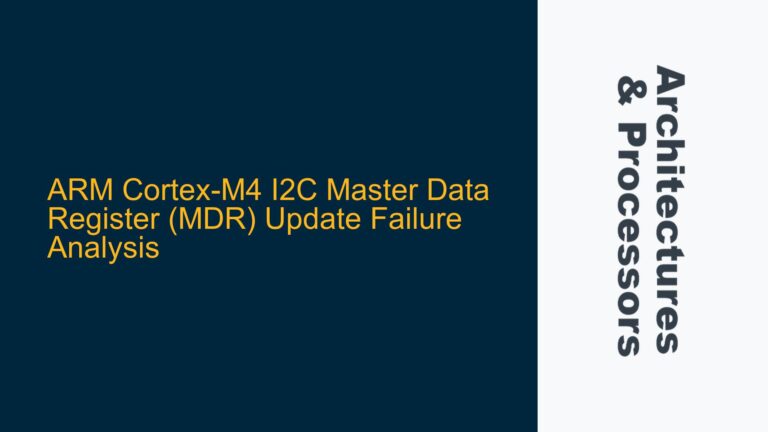Synchronous Exception SPx During MMU Enable in BL1 Stage
The issue described involves a failure during the reboot process on an ARM Fixed Virtual Platform (FVP) RDV2 platform. Specifically, the failure occurs in the BL1 stage when attempting to enable the Memory Management Unit (MMU) in EL3 mode. The failure manifests as a Synchronous Exception SPx, triggered by the isb instruction in the enable_mmu.s file. This exception indicates a memory access failure, suggesting that the system is unable to read from a specific memory address during the MMU enable process.
The BL1 stage is the first bootloader stage in ARM Trusted Firmware (ATF), responsible for initializing the CPU, setting up the MMU, and loading subsequent bootloader stages. The enable_mmu_direct_el3 function is a critical part of this process, as it configures the MMU for direct mapping in EL3. The isb instruction, which stands for Instruction Synchronization Barrier, ensures that all previous instructions are completed before proceeding. The occurrence of a Synchronous Exception SPx at this point suggests a fundamental issue with memory access or MMU configuration.
The failure is particularly concerning because it occurs during a cold reboot, which is expected to reset the system to a clean state. The fact that the system fails at this early stage indicates a potential issue with the platform’s memory subsystem, MMU configuration, or the interaction between the CPU and memory during the reboot process.
Memory Subsystem Misconfiguration and MMU Initialization Timing
The root cause of the Synchronous Exception SPx during the isb instruction in the enable_mmu.s file can be attributed to several potential issues related to the memory subsystem and MMU initialization timing. One possible cause is an incorrect or incomplete configuration of the memory subsystem during the early stages of the boot process. The MMU relies on a properly configured memory subsystem to access the necessary page tables and translation data. If the memory subsystem is not correctly initialized, the MMU may attempt to access invalid or unmapped memory addresses, leading to the observed exception.
Another potential cause is the timing of the MMU enable process relative to other system initialization steps. The enable_mmu_direct_el3 function is typically called after the CPU and memory subsystem have been initialized. However, if there is a delay or misordering in the initialization sequence, the MMU may attempt to access memory before it is fully ready. This could result in a failure to read the necessary memory addresses, triggering the Synchronous Exception SPx.
Additionally, the use of the reboot -f command, which forces a reboot without performing a proper shutdown, may exacerbate the issue. This command bypasses the normal shutdown sequence, potentially leaving the system in an inconsistent state. When the system attempts to reboot, the memory subsystem may not be properly reset, leading to issues during the MMU enable process.
Implementing Proper Memory Initialization and MMU Configuration
To resolve the Synchronous Exception SPx during the MMU enable process, a systematic approach to troubleshooting and fixing the issue is required. The following steps outline a comprehensive strategy for identifying and addressing the root cause of the problem.
Step 1: Verify Memory Subsystem Configuration
The first step is to ensure that the memory subsystem is correctly configured before enabling the MMU. This involves verifying that all necessary memory regions are properly mapped and accessible. The following table outlines the key memory regions that should be checked:
| Memory Region | Description | Expected State |
|---|---|---|
| DDR Controller | Main system memory | Initialized and accessible |
| MMU Page Tables | Translation tables for MMU | Properly populated and mapped |
| Boot ROM | Initial boot code | Readable and executable |
| Peripheral Registers | Configuration registers for peripherals | Accessible and properly configured |
If any of these memory regions are not in the expected state, the system may fail to access the necessary memory addresses during the MMU enable process. To verify the memory subsystem configuration, use a debugger to inspect the relevant memory regions and ensure that they are correctly initialized.
Step 2: Review MMU Initialization Sequence
The next step is to review the sequence of operations during the MMU initialization process. The enable_mmu_direct_el3 function should be called after the memory subsystem has been fully initialized. If the function is called too early, the MMU may attempt to access memory that is not yet ready, leading to the observed exception.
To ensure proper timing, review the boot sequence and verify that the following steps are performed in the correct order:
- Initialize the CPU and set up the necessary registers.
- Configure the memory subsystem, including the DDR controller and any necessary memory regions.
- Populate the MMU page tables with the correct translations.
- Enable the MMU using the
enable_mmu_direct_el3function.
If the sequence is incorrect, adjust the boot code to ensure that the MMU is enabled only after the memory subsystem is fully initialized.
Step 3: Address the Impact of reboot -f Command
The use of the reboot -f command can have a significant impact on the system’s state during a reboot. This command bypasses the normal shutdown sequence, which can leave the system in an inconsistent state. To mitigate this issue, consider the following approaches:
-
Avoid Using
reboot -f: Whenever possible, avoid using thereboot -fcommand. Instead, use the standardrebootcommand, which performs a proper shutdown before rebooting the system. This ensures that the system is in a consistent state before the reboot process begins. -
Implement a Forced Reboot Handler: If a forced reboot is necessary, implement a handler that ensures the system is properly reset before proceeding with the reboot. This handler should perform the following steps:
- Save any critical state information.
- Reset the memory subsystem and other critical components.
- Perform a clean reboot sequence.
-
Add Debugging Information: To aid in troubleshooting, add additional debugging information to the boot code. This can include logging the state of the memory subsystem and MMU configuration before and after the
enable_mmu_direct_el3function is called. This information can help identify any inconsistencies or issues that may be causing the failure.
Step 4: Validate MMU Configuration and Page Tables
The final step is to validate the MMU configuration and page tables to ensure that they are correctly populated and mapped. The MMU relies on these tables to translate virtual addresses to physical addresses. If the tables are incorrect or incomplete, the MMU may attempt to access invalid memory addresses, leading to the observed exception.
To validate the MMU configuration and page tables, perform the following steps:
-
Inspect Page Table Entries: Use a debugger to inspect the page table entries and verify that they are correctly populated. Ensure that all necessary memory regions are mapped and that the translations are correct.
-
Check Page Table Base Address: Verify that the base address of the page tables is correctly set in the MMU configuration registers. If the base address is incorrect, the MMU may attempt to access invalid memory locations.
-
Validate Translation Granule: Ensure that the translation granule (e.g., 4KB, 16KB, or 64KB) is correctly configured and matches the expected memory layout. An incorrect translation granule can lead to misaligned memory accesses and potential failures.
-
Test MMU Configuration: After validating the page tables, test the MMU configuration by enabling the MMU and performing a series of memory accesses. Use a debugger to monitor the memory accesses and verify that they are correctly translated.
By following these steps, you can identify and address the root cause of the Synchronous Exception SPx during the MMU enable process. Properly configuring the memory subsystem, ensuring correct initialization timing, and validating the MMU configuration will help resolve the issue and ensure a successful reboot on the ARM FVP RDV2 platform.
